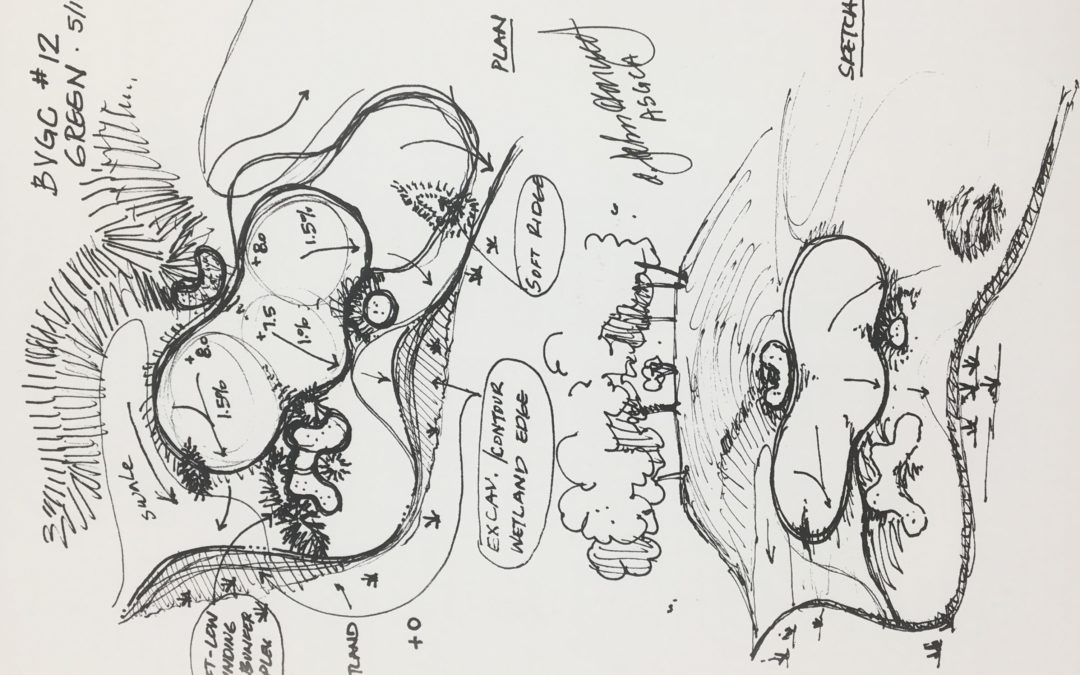A. John Harvey spent eight years with Robert Trent Jones Sr. as a junior design associate, and, in 1995, Harvey joined the Roger Rulewich Group as a design associate. In 2002, he joined forces with Morristown, New Jersey–based RBA Group, where he currently heads the golf course design division. Harvey has also served as a guest lecturer at Rutgers University for turfgrass courses. Some of his work includes Anglebrook Golf Club in Somers, New York; Ballyowen in Hardyston, New Jersey; Grande Dunes Golf and Beach Club in Myrtle Beach, South Carolina; and the Robert Trent Jones Trail’s Silver Lakes courses in Anniston, Alabama.
Roger Rulewich Group as a design associate. In 2002, he joined forces with Morristown, New Jersey–based RBA Group, where he currently heads the golf course design division. Harvey has also served as a guest lecturer at Rutgers University for turfgrass courses. Some of his work includes Anglebrook Golf Club in Somers, New York; Ballyowen in Hardyston, New Jersey; Grande Dunes Golf and Beach Club in Myrtle Beach, South Carolina; and the Robert Trent Jones Trail’s Silver Lakes courses in Anniston, Alabama.
The consulting team of the RBA Group and the Roger Rulewich Group, with me as lead golf course architect, was awarded the contract to design a championship caliber, eighteen-hole golf course to be the most recent addition to the stable of courses owned and operated by the Morris County Park Commission.
The site selected for the course was an abandoned sand and gravel pit in the northwest portion of the county. The property was fallow for twelve years prior to the start of course construction in 2000.
During active mining, siltation ponds were created by wet excavation and dragline mining. They had been used to capture soil and sediment from leaving the site and entering the adjoining pristine Rockaway River. Over time these excavations became colonized by opportunistic wetland and transitional vegetation. We prepared a comprehensive development package from site feasibility to construction inspection for this eighteen-hole championship golf and practice facility on four hundred acres of challenging, yet dramatic property in northern New Jersey.
We evaluated all of the environmental constraints including wetlands, buffers, floodplains, soils, vegetation, endangered species, water quality, groundwater, zoning, and utilities. Based on these constraints, we obtained the seven required permits and came up with several layouts.
Final design plans and construction documents were then prepared for the eighteen-hole continuous layout, to include a clubhouse, maintenance facility, halfway house, pump house, and rain shelter.
The site constraints of this former sand and gravel operation necessitated the design of a 2,000-foot entrance roadway with a 10-foot concrete block retaining wall. In addition, importing 230,000 cubic yards of recycled fill material was required to supplement earthwork and shaping needs.
We incorporated one of the most unique historic landmarks in the area, the stone ruins of a building that once housed the Ringling Brothers first traveling circus elephants in America, into the par-three, twelveth hole to serve as part of the wall containing the tee complex. The hole plays over the Rockaway River and related wetlands corridor to a green complex bordering the river and a water fall created as part of iron mining operations in the late 1800’s.
The challenge of this project was to balance the opportunities and constraints of this property and weave a golf course layout around the site to take advantage of the spectacular scenery without compromising the ecosystem that encompasses the development, while at the same time creating a strategic sequencing of holes that are both enjoyable and memorable.

